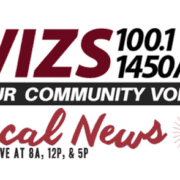WIZS was live at the 60th annual Shriners Fish Fry today during the 11 a.m TownTalk segment. Come get some fish today until 7 p.m.
Today’s THE Day, if you’re a member of the Tri-County Shrine Club. Or, if you’re someone who is planning to drive out to the annual Fish Fry. Today’s the day. Come get your fish between now and 7 p.m.
Take-out plates are ready now and the cars are lining up to get plates of perfectly battered and fried fish, complete with cole slaw, potato salad and hush puppies.
If you’ve got a ticket, great, but if you don’t, no problem. Shriners will happily take your $10 in exchange for a plate.
It’s all for a good cause – proceeds go to Shriners Children’s Hospital and burn centers.
Orders of 10 plates or more were delivered to places of business who called.
“Buy a fish plate to support Shriners Hospital,” Billy Currin said in an interview. He said they’d gotten about 600 lunch orders by 11:30 or so, and Vernon Mustian – taking a break from the fryer – said there’s plenty of fish for all.
Vance County Sheriff Curtis Brame was out in the take-out line first thing and encourages everyone to come out and get some fish for a great cause. As someone who had been a burn victim himself as a young person, the result of a tobacco barn that blew up, he said, “Any time I can volunteer, I do my best to do it.”
Shriner Sherby Slaughter found himself under the tent on Fish Fry Day, taking money and tickets while plates get loaded into vehicles.
“They gave me a sit-down job, so I’m just where I need to be,” Slaughter said. He has offered his property for the past several years to host the Fish Fry, which has proven to be a perfect spot to get vehicles through the line safely and efficiently.
Slaughter said he is happy that he is able to provide the location – “anything we can do for the crippled and burned child,” he said.
One of those people shuttling plates of piping hot fish to the pick-up area is Dale Dancause, who said he’s been involved with Masons and Shriners for about 15 years.
“It’s all about the children,” he said, adding that his association with these two groups was “the best thing I ever did in my life.”









